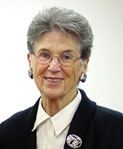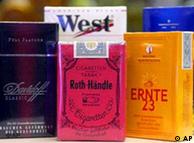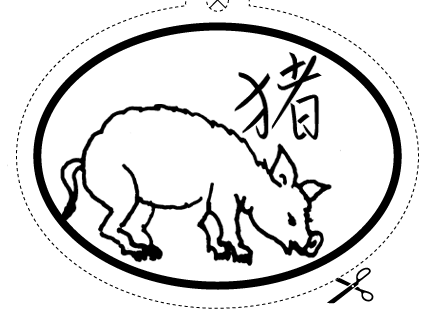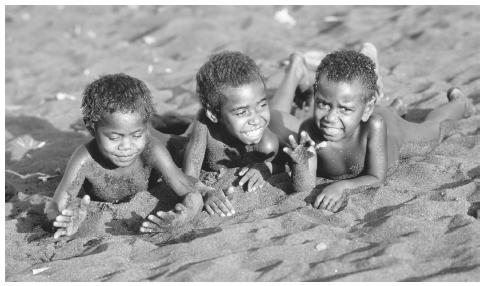
Objectivity is the dominant ethos of modern journalism. It underscores notions of fairness, accuracy and lack of bias in the media. But although central to journalist behaviour, objectivity is a troubled idea. Is objectivity merely a code for journalists to go through the motions and avoid tackling the hard issues? Does a lack of bias prevent journalism from performing its watchdog function? Or is objectivity the core item that underscores all that good about journalism “describing society to itself”? This essay will examine what objectivity is, how it came to be a central tenet of journalism, how it is now challenged and look at ways it may be treated in the future.
According to the dictionary, the word “objectivity” means concentration on matters independent of the mind, or, a presentation of an external world that is observable or verifiable, especially by scientific method. In the less scientific world of journalism, Philips concluded objectivity was a set of canons based on notions of balance, fairness, lack of bias, accuracy and neutrality. For the media, objectivity is all about reporting the news in a fair and balanced manner. It is also related to professionalism in journalism. Gerald Stone described it as “the ability of the journalist to recognise his personal leanings and his ability to control them”. Journalists are duty-bound to report the truth. Yet that may not be straightforward in a situation of ‘multiple realities’ – a situation where no one ‘reality’ is more valid that another. But to understand the complex state of objectivity in today’s journalism, it is first necessary to look at its evolution.
The first journalists had more urgent matters to attend to than the pursuit of objectivity. Defamation was a common law offence from the 16th century. Meanwhile most European countries licensed printing presses and printers were subject to prior censorship. Penalties were harsh and early journalists such as Daniel Defoe and Benjamin Harris suffered the indignities of jail and the pillory for their writings. But Harris was imprisoned not because he printed libels but “because he printed the truth as he saw it”. The first signs of change came with Franklin’s inclusion of the “freedom of the press” in the US bill of rights.

Despite Franklin’s own policy of editorial impartiality, news was mostly reported in partisan fashion until the 19th century and the arrival of Reuters. When they and other mass wire services wanted to make money by selling news to newspapers of multiple political views, they decided they needed to stick to facts and left the judgement to the newspapers. Newspapers themselves began to adopt this practice as their own audiences became more diverse. The influx of college graduates in some American newspapers began to shape new ideas about how to conduct work. One of these ideas was that news had to be factual. By the 1920s, newspapers attempted to attract educated middle class readers by stressing their dedication to ideals of objectivity as what Dunlevy called “consensually validated facts about the world”.
But consensual validation didn’t last long. The rise of wartime propaganda and the post-war development of public relations meant that trust in objective facts began to wane. To counter this, Walter Lippman (who experienced propaganda at first hand during the First World War) began to characterise objectivity as a method. His ideas were well-received. Today, journalists in Australia, Britain and the US enthusiastically embrace objectivity as a method rather than a measure of content.
But objectivity, whether measured by method or content, has a major difficulty. It involves an assumption there is one true external reality which is ‘out there’ waiting to be discovered. Today, this assumption is undermined by technologies which have the ability to dissolve the difference between the fiction and the real world. The assumption is also undone by a proposition in the definition of objectivity itself; that is “the link between language and ideology and the infinite number of perceptions about any one event”. Mary Beasley, then South Australian ombudsman, was keenly aware of these links and the multiplicity of reality when she told a 1985 conference that objectivity was a myth. In her words, discrimination was a fundamental part of nature. John Pilger goes further still and sees objectivity as an inhibition for journalists. He describes it as a process of “not rocking the boat, [and] presenting the Establishment point of view”.
But what is this establishment point of view? In Australia, as well as the US and Britain, there is a dominant two-party political system that represents the establishment. Under this system, the media strive to be value-neutral in order not to not to greatly offend either party. It makes political sense for journalists to get both sides of a story and it also allows journalists to claim they are acting ethically by abiding to the first clause of their MEAA code of ethics which says “do your utmost to give a fair opportunity to reply”. The issue with this type of reportage is that both sides may be wrong or indeed there may be other competing views which are not reported on at all. According to Tuchman, merely presenting conflicting claims to the truth is not the same as presenting verified facts.
The news may well consists of objective and balanced reports. But it may still be biased if it is framed in terms of conflicts between elites and allows no voices other than those who speak for powerful institutions. Objective reporting is often little more than reporting the statements of politicians and lobby groups in knee-jerk style without focussing or mediating the debate. Furthermore, the detachment of objectivity is restrictive and constrains a journalist’s ability to confidently judge right from wrong.

Few doubt the agenda-setting powers of the media. But it is also true that television and newspapers determine “what we think about more than what we think”. This is often done by omission. Hurst argues that real power is keeping items off the agenda. Existing power structures are legitimised by the media because facts about the powerful require more verification than facts about the powerless and therefore tend to be excluded. Also, Herman and Chomsky’s propaganda model shows how news filters such as ownership, advertisers, use of primary sources, and negative reaction operate to marginalise dissidents. The authors agree that news people are objective and operate with professional news values but only under the constraints of the news filters.
But how else should the news be selected for its audience? There are two factors: firstly the “interests” of the audience and secondly the “importance” of the news to the audience. Hurst argues that audiences are best served when both of these factors are taken into account. Newer internet media with their tools of “intelligent synthesis” may be able to handle this dual responsibility better than their more rigid traditional counterparts.
But journalism should be the same in whatever medium it is practiced. One view of journalism is that it is a neutral, objective, and restrained profession that monitors social processes and transmits accurate accounts of them without sensationalism or bias. But although these accounts may be accurate, they may not be fair. Hall theorised how, in the name of objectivity, the “rules of journalism” promote the practice of ensuring that media statements are usually grounded in authoritative statements from accredited sources. These sources (eg Government, police, employer groups, trade unions etc.) become the primary definers of topics and set the terms of reference within which all further coverage and debate takes place. Other critics have attacked journalism for its ideological effects and role in reproducing the capitalist order. That is not to say sources should not be used but they should not merely be mouthpieces of their role. Expert testimony should be objective but also fair-minded. This means sources should strive to base their interpretative comments on extensive knowledge or research into the issues under discussion. Without this underlying knowledge, news remains manufactured and objectivity is merely a ritual to defend journalists.
But not all journalists believe objectivity is a cardinal value. There are many interpretative writers who make highly subjective judgements, deciding not only what facts to include but also how to prioritise them and what emphasis to give them. Even the most objective reporters make one important personal decision when building a typical inverted pyramid story: they must choose what they think to be the most important item in the report as the story lead. And journalists make other decisions in their reports that affect objectivity such as the presentation of conflicting possibilities, including supplementary evidence and the use of quotation marks. Van Dijk showed how putting words or phrases into quotes is a way of distancing the journalist from the sentiment expressed. Rather than being objective, this is a discrediting device and a means of introducing the reporter’s opinion.
Interpretation ought not distort the facts. Though establishing what the facts are may not always be easy. A 1980s study by Lanson and Stephens cautioned that interpretation was going too far. They warned against overuse of flimsy evidence and unnamed sources in what they labelled “trust me” journalism. The use of connotative language can also be a hidden way of introducing author opinion and lends itself to misinterpretation. Connotative words are dangerous because they are value-laden and often pejorative. Interpretation is different across different audiences too. Morley’s 1983 study of the BBC’s Nationwide television current affairs show demonstrated how different socio-economic groups produced oppositional readings of perspectives offered by the same program. Studies like this show there is no one possible version of the truth that will be accepted by an entire audience.

Whatever the truth may be, journalists themselves are participants in the news. The watchdog function of the media means that journalists must impose their own points of view in events and provide interpretation to give these events meaning. But a study by Gans found that most journalists enter the profession not because they want to change society but because they want to write about current events. Objectivity and neutrality are important issues for them. Australian journalists have voted numerous times to keep their professional association out of the Australian Council of Trade Unions under the mantra of “journalism ain’t join-alism”.
While journalists strive to keep unionism at arm’s length, the fact remains that nearly all journalists work for large corporations. Most media are private businesses whose most basic function is to make a profit. Unless they can do that, they will be unable to do any other important functions. Schudson says objectivity is a peculiar demand to make of organisations dedicated to economic survival. On the one hand, market theory calls for bias on that stories that affect the organisation, its advertisers, and investors in order to protect their assets; on the other hand journalism theory demands there be no bias to the news. It is a serious conflict of interest. Nevertheless, objectivity does provides a framework for defining work practices and values even if the traditional argument is that media will always show a political bias in favour of their owners.
So-called objectivity may simply be lazy journalism and a strategy to meet deadlines and avoid defamation. Worse still, objectivity becomes routine and news becomes little more than reporting selected opinions about events. Schudson argues that on this level objectivity is reduced to a set of conventions that reduce journalists’ responsibilities for their own words. As the American journalist I. F. Stone said “most of the time, objectivity is just the rationale for regurgitating the conventional wisdom of the day”.
News media actively create needs and wants for audiences, partly by promotion of their products and partly by agenda setting. But news organisations are capable of misreading their audiences. Sometimes decisions about what is of interest to the public are based on assumptions, guesswork and misinterpretation. Audiences tend to be more accepting of TV news coverage than their print counterparts. Its higher level of credibility is because of its pictures, which people accept as the truth despite the sophisticated editing process that goes on behind the scenes.
The television business is driven by ratings and advertisers generally support those media outlets whose target audiences have the power to buy their products. Because the interests of the majority of the audience are paramount concern to the media, it is likely significant parts of the population who may belong to minorities or who have unconventional tastes will be denied access to mainstream media.
News organisations have duties to the public which include providing information, education and enlightenment as well as occasionally advocating social and political change. There is an argument that the media should play an educational role rather than merely reflect interests, opinions and tastes. In this paradigm, the media becomes an instrument for social and political change. The media has an obligation not only to serve the needs of its audience but also to conduct systematic and ongoing inquiries about the nature of those needs. It is this watchdog function that most relies on objectivity and professional to support its stance. But it has also disrupted journalism’s traditional links with the public. The watchdog role sets up an adversary framework, pitting journalists against the judiciary, the executive, the parliament, and ultimately the public. The public become students to be educated by the media rather than participants in self-government.

But as argued elsewhere in this essay, the cosy relationship between journalists and their primary sources leaves the public out of the discourse. Meadows gives the example of the Australian Native Title Act of 1998 where journalists focussed entirely on Prime Minister Howard’s political machinations to get the act through parliament while totally ignoring the consequences of the Aboriginal people most affected by the act. No doubt the Canberra press corps would argue they were objective in their analysis of Wik. But it seems an imperfect and closeted summary of events. A better understanding of external reality would have been a useful aid to greater objectivity. Lee defined three types of reality: plain truth, verifiable realities and non-verifiable realities. Journalists need to be objective about all of these realities.
So what about the South Australian ombudsman who declared objectivity a myth? This essay has gone a long way to agreeing with Mary Beasley. Yet objectivity is not a myth. For one thing, a myth in its semiotic sense is culture-specific, changeable and unarticulated. Lee’s definition provides a framework that is culturally independent, permanent and textually expressed. More importantly, it reminds us that objectivity does not reside in the quality of the product but in the mode of performance. Whenever someone says of journalism “this is not objective”, that person assumes the possibility of objectivity. It is time again for objectivity to resume the rigorous role that Franklin and Lippman meant for it and not become a prescription for ritual.
Bibliography
Bell A 1996 (1991), The language of news media, Blackwell publishers, Cambridge MS.
Burns L 2001 “Comfort or Curse?” in Tapsall S, Varley C (eds), Journalism: Theory in practice, Oxford University Press, South Melbourne
Conley D & Lamble S 2006, The daily miracle, Oxford, Melbourne
Craig, G 1995, “Press photography, pixel technology and questions of representation”, Australian Journalism Review,v.17 no.1 1995: (70)-78.
Dunlevy M 1998, “Objectivity” in Breen M (ed.), Journalism: Theory and practice. Macleay Press, Sydney
Hall S, Critcher C, Jefferson T, Clarke J, Roberts B 1984, Policing the crisis: Mugging, the State and Law and Order, MacMillan, London
Henningham J 1988, Looking at Television News, Longham Cheshire Melbourne
Herman E and Chomsky N 1994 (1988), Manufacturing consent: The political economy of the mass media, Vintage, London
Hurst J 1991, “Journalistic objectivity and subjectivity in news reporting and news selection,” in Australian Journalism Review 13 (1&2), January-December 1991, pp. 23-30.
Lee P 1999, “Does journalism seek truth out? A typology of realities in the news profession” in Australian Journalism Review, 21 (1), July 1999, pp. 92-106
MEAA 2007, Code of ethics, http://www.alliance.org.au/hot/ethicscode.htm,
accessed 20/02/07
Meadows M 2001 “Return to practice: reclaiming journalism as public conversation” in Tapsall S, Varley C (eds), Journalism: Theory in practice, Oxford University Press, South Melbourne
O’Sullivan T, Hartley J, Saunders D, Montgomery M, Fiske J 1995, Key concepts in communication and cultural studies, Routledge, London.
Pearson M 2004, The journalist’s guide to media law (2nd edition), Allen & Unwin, Sydney
Quinn S 2001, Newsgathering on the Net (2nd edition), Macmillan, Melbourne
Romano A and Hippocrates C 2001 “Putting the public back into journalism” in Tapsall S, Varley C (eds), Journalism: Theory in practice, Oxford University Press, South Melbourne
Schudson M 1978, Discovering the news: A social history of American newspapers, Basic Books, New York
Schultz J 1998, Reviving the fourth estate: Democracy, accountability and the media, Cambridge University Press, Cambridge
Van Dijk T 1991, Racism and the Press, Routledge, London
Ward, I 1995, Politics of the Media, MacMillan, Melbourne
White S 2005, Reporting in Australia (2nd edition), MacMillan, Melbourne
 The inspiration for the influential women’s lobby group EMILY’s list died earlier this month. Her name was Harriet Woods. Woods narrowly missed out on becoming the US first female Democrat senator when she came from nowhere to narrowly lose a Missouri senate race in 1982 to incumbent Republican Senator John Danforth. Woods died of leukaemia aged 79 on 9 February.
The inspiration for the influential women’s lobby group EMILY’s list died earlier this month. Her name was Harriet Woods. Woods narrowly missed out on becoming the US first female Democrat senator when she came from nowhere to narrowly lose a Missouri senate race in 1982 to incumbent Republican Senator John Danforth. Woods died of leukaemia aged 79 on 9 February.  EMILY’s List is now a major player in the US political scene. According to the Centre for Responsive Politics, a non-profit group in Washington that tracks money in congressional elections, EMILY’s List spent $24 million in the 2004-2006 election cycle, more than any other independent political action committee in the US. This figure does not include funds political action committees associated with national party committees have given out to congressional candidates. The List’s executive director Ellen Moran said her group's track record "speaks for itself”.
EMILY’s List is now a major player in the US political scene. According to the Centre for Responsive Politics, a non-profit group in Washington that tracks money in congressional elections, EMILY’s List spent $24 million in the 2004-2006 election cycle, more than any other independent political action committee in the US. This figure does not include funds political action committees associated with national party committees have given out to congressional candidates. The List’s executive director Ellen Moran said her group's track record "speaks for itself”.





























